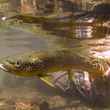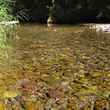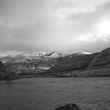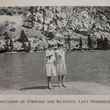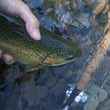We turn onto the gas company improved access road and head into one of the many tracts of public, state forest land in Pennsylvania. Our SUV bounces and clatters along through dense stands of mixed deciduous and evergreen forest, gravel from the road kicking up into the truck’s undercarriage. Thanks to the condition of the road, which is without question the most well-maintained state forest access road I’ve ever ventured along, we’re able to carry on at a brisk pace. Nevertheless, we continue on into the forest for 10 or 15 minutes before we reach our destination, an Anadarko natural gas well pad in Pennsylvania’s Pine Creek Valley. From those of us who haven’t previously seen first hand the real-world impacts of gas drilling in the Marcellus Shale region of Pennsylvania, there’s a collective, palpable sense of awe, though for altogether unexpected reasons.
As an angler and a conservationist, environmentalist or any other label I might choose to identify myself as someone who puts a great deal of value on preserving and protecting wild and natural places, especially wild and natural waters, there are a myriad of reasons to be concerned about the potential impacts of hydraulic fracturing (aka “fracking”) on these places. The typical reflex is to contemplate the sensational: overturned trucks carrying fracking wastewater, mountain creeks drawn dry by unregulated industry water withdrawal, pristine streams choked by out-of-control sediment resulting from erosion of disturbed forest parcels and so on. And, while all of these threats are real, and have occurred in Pennsylvania to some extent or another, what I encounter when we arrive is in stark contrast to these horror stories.



